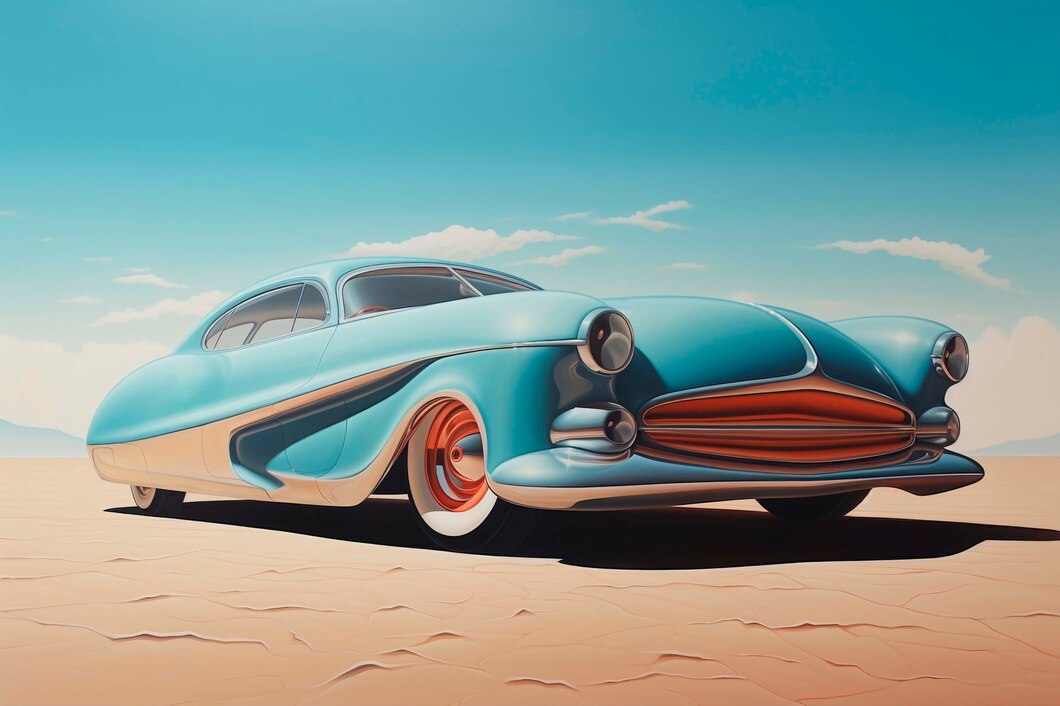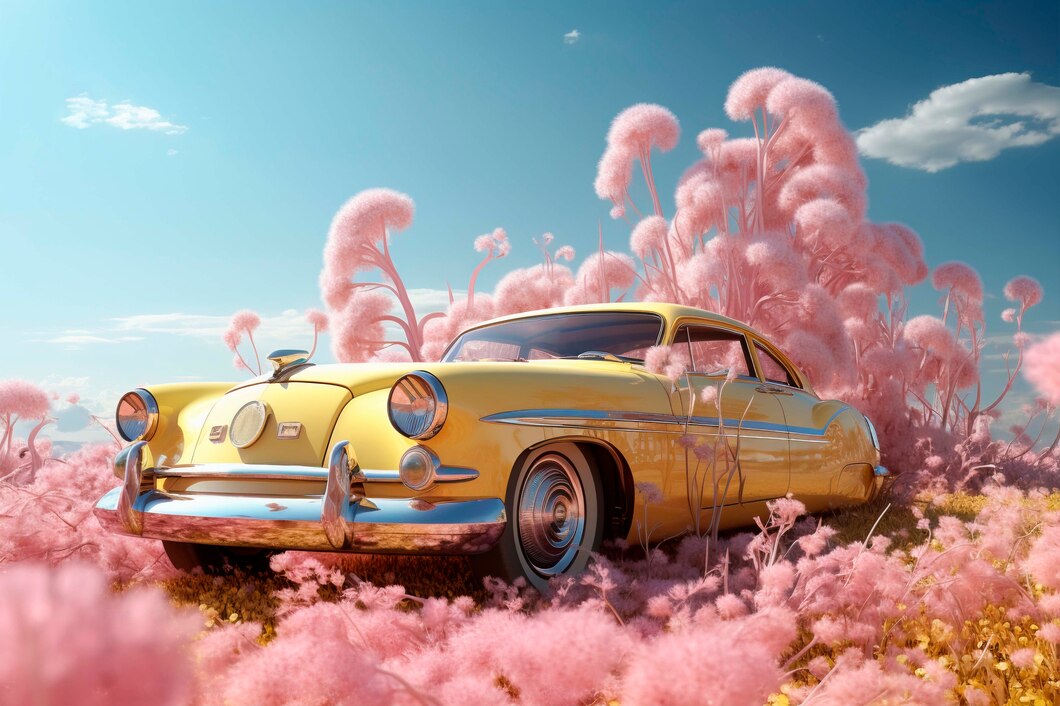Introduction
The world of classic luxury automobiles is one of elegance, sophistication, and unparalleled craftsmanship. These cars represent more than just transportation; they are rolling works of art that capture the essence of a bygone era. From the meticulously sculpted curves of a 1957 Mercedes-Benz 300SL to the imposing presence of a Rolls-Royce Phantom V, classic luxury cars have an aesthetic and mechanical appeal that transcends time. We are reminded of a time when automobiles were crafted with passion, precision, and an eye for detail that is frequently lacking in today’s mass-produced vehicles because of their influence on automotive design and engineering, which continues to shape the modern industry.

The Legacy of Luxury Automobiles
Classic luxury automobiles are defined by their superior build quality, premium materials, and cutting-edge technology for their time. They were built to cater to the elite, offering an unmatched level of comfort and prestige. Brands like Rolls-Royce, Bentley, Mercedes-Benz, Cadillac, and Aston Martin became synonymous with luxury, each producing models that stood as benchmarks in the industry. These vehicles were more than just a means of transport; they symbolized status, power, and success.
The legacy of these cars continues to influence contemporary designs. Many modern luxury vehicles pay homage to their predecessors through stylistic elements, performance advancements, and bespoke features that harken back to an era when handcrafted excellence was the norm. Classic luxury cars are admired not only for their beauty but also for their durability, as many have stood the test of time and remain drivable even decades after their initial release.
Timeless Aesthetics and Design Philosophy
One of the most distinguishing factors of classic luxury automobiles is their breathtaking design. Unlike today’s vehicles, which are often designed with aerodynamics and efficiency as top priorities, classic luxury cars were created with an emphasis on elegance and grandeur. Each vehicle was a masterpiece, with flowing lines, elongated hoods, and intricate detailing that showcased the creativity and expertise of automotive designers.
The 1930s and 1940s saw some of the most elegant luxury cars ever produced. The teardrop-shaped bodies, sweeping fenders, and hand-crafted grilles of automobiles like the Delahaye 135MS and the Bugatti Type 57SC Atlantic made them stand out. These cars weren’t just built to be fast; they were designed to be admired, with every curve and contour contributing to their aesthetic appeal. The interiors were just as luxurious, often featuring hand-stitched leather seats, wooden dashboards, and intricate metalwork that gave the cabin a sense of exclusivity and refinement.
In the 1950s and 1960s, car manufacturers began experimenting with sleeker, more futuristic designs while maintaining their commitment to luxury. The Cadillac Eldorado, for instance, became famous for its tail fins, while the Jaguar E-Type was celebrated for its aerodynamic silhouette. These cars became cultural icons, appearing in films, advertisements, and high-society gatherings, further solidifying their status as objects of desire.
Craftsmanship and Attention to Detail
One of the defining characteristics of classic luxury automobiles is the extraordinary level of craftsmanship that went into their construction. Unlike modern assembly-line vehicles, these cars were often built by hand, with skilled artisans dedicating countless hours to perfecting every detail. An unwavering dedication to excellence was demonstrated by the level of precision used in the stitching of the seats, the polishing of chrome accents, and the tuning of the engine. For example, Rolls-Royce prided itself on building cars with an unmatched level of quality control. Each vehicle was tested rigorously, and even the smallest imperfections were addressed before the car was delivered to its owner. Bentley and Aston Martin followed similar practices, ensuring that every car leaving their factories met the highest standards of craftsmanship. The result was a product that not only looked beautiful but also offered a level of reliability and durability that made them last for generations.
Engineering Marvels of Their Time
Beyond their beauty, classic luxury cars were also engineering marvels. Many of them introduced groundbreaking technologies that would later become industry standards. Mercedes-Benz, for example, pioneered fuel injection with the 300SL, significantly improving performance and efficiency. Cadillac was among the first to introduce power steering, making driving a more effortless experience. Rolls-Royce continuously refined its suspension systems to offer the smoothest ride possible, making it feel as if passengers were floating on air.
The powerful engines of luxury automobiles from this era were also well-known. The V12 engines of Ferrari and Lamborghini set new benchmarks for speed and performance, while Bentley’s massive inline-six engines delivered smooth, effortless power. These automobiles were designed not only for appearance but also for performance, providing a thrilling and refined driving experience.
The Cultural Impact of Classic Luxury Cars
Popular culture has been significantly influenced by classic luxury automobiles. Many of them have been featured in Hollywood films, driven by movie stars, royalty, and political leaders. The Aston Martin DB5, for instance, became one of the most famous cars in cinematic history thanks to its association with James Bond. In a similar vein, the sleek design of the Lincoln Continental secured its place in history by making it a favorite among U.S. presidents and other dignitaries. Aspirations of society were also reflected in luxury automobiles. Owning a Rolls-Royce or a Bentley was not just about driving a car; it was about making a statement. These vehicles were often seen as symbols of success and were associated with the elite, further adding to their desirability. Collectors and enthusiasts still look for classic luxury cars as investments because they recognize their value not only as automobiles but also as works of art and pieces of history.
The Revival and Restoration of Classic Luxury Cars
The passion for classic luxury automobiles has only grown with time, leading to a thriving industry dedicated to restoring and preserving these timeless machines. These automobiles are meticulously rebuilt and refurbished by restoration shops and specialists in classic cars to maintain their original pristine condition. Many classic car enthusiasts dedicate years to sourcing original parts, meticulously repainting bodywork, and refining engines to keep these cars in perfect condition.
Car shows and auctions have also contributed to the resurgence of interest in classic luxury cars. Events such as the Pebble Beach Concours d’Elegance and the Goodwood Festival of Speed attract collectors and admirers from around the world, celebrating the beauty and engineering of these legendary automobiles. The market for classic luxury cars remains strong, with rare models fetching millions of dollars at auctions, highlighting their enduring value.

Conclusion
More than just machines, classic luxury automobiles are relics of a bygone era of style, innovation, and exceptional craftsmanship. Their timeless designs, attention to detail, and cultural significance have made them some of the most revered automobiles in history. From the sweeping lines of a Bugatti Type 57 to the stately presence of a Rolls-Royce Phantom, these cars continue to captivate enthusiasts and collectors alike. As the automotive industry moves toward the future, the legacy of these iconic vehicles remains a source of inspiration, reminding us of a time when cars were built not just for efficiency, but for artistry, sophistication, and sheer opulence.

